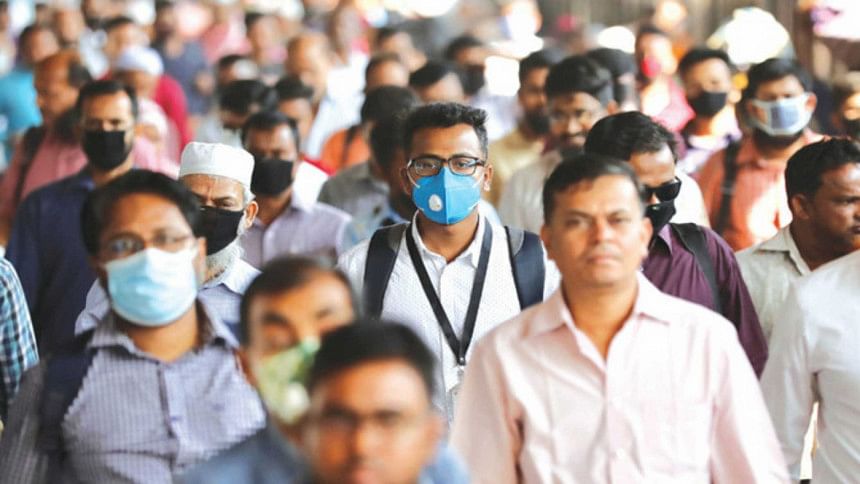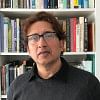Is smart density the way forward for Bangladesh?

Going around in Dhaka could be overwhelming. The city seems overburdened with the impossible weight of people, buildings, vehicles, rickshaws, noise, carbon emission, and nonstop activities. The city's density (generally expressed as people per square mile or per acre) makes its inhabitants anxious about its future. I still remember an American colleague, who was visiting the city as part of a study tour I was leading, calling Dhaka "apocalyptic." While they enjoyed seeing some of Dhaka's finest modernist buildings—including the parliament building, TSC, and the Faculty of Fine Arts—most of the tour participants thought the city's extreme density of people and the built environment were scary. Many locals in Dhaka express similar views.
In fact, this fear has a long history. It has been a quintessential modern experience that originated in the 19th century. In the wake of the Industrial Revolution, large Western metropolises like London and New York became overcrowded with factory workers, immigrants, and the urban poor. By the end of the 19th century, 40 percent of Britain's population lived in cities, compared to a mere four percent in Russia and seven percent in China. America's urban population jumped from seven percent in 1820 to 50 percent a hundred years later. Congested and disease-ridden slums, frequent cholera epidemics, abject poverty, and crimes in Victorian London led many to believe that the capital of the British Empire had become hell.
Offering an exposé of filthy living conditions in South London in 1883 with a shocking pamphlet titled "The Bitter Cry of Outcast London," a clergyman named Andrew Mearns demanded housing reform in the industrial city. Conditions in New York was the same. Jacob Riis, a Danish immigrant who became a police reporter in New York, shook the conscience of New Yorkers with his book "How the Other Half Lives" (1890) that portrayed the unconscionable conditions in the city's tenements.
At the centre of these horrified reactions was, justifiably, an anti-urban fear of overcrowding in the metropolis. As public health workers, social reformers, and design professionals sought answers to the pathologies of 19th-century industrial cities, the antipathy toward congestion and overpopulation became codified as a broader anti-density approach within emerging urban planning theories.
Overcrowding became synonymous with population density, poverty, disease, and depletion of resources. High density was typically seen as a threat to public health, the planet, and, in general, humanity. The anxiety over "popullation"—pollution resulting from population density—continued to influence planning philosophies throughout the 20th century. Earlier, in the late 18th century, Thomas Malthus, an English priest and economist, had already offered a theoretical framing for the anti-density approach by claiming that human population grows at a rate much faster than that of human food supply, until catastrophes reduce the population size.
The dread of population density and the menace of epidemics led to the creation of modern sewerage systems, public parks, and housing reforms in 19th-century Western metropolises. Planning professionals developed many density-control tools: for example, setback rules to allow light and air in between buildings, and floor-area ratio to control the size of a building's volume on a plot and thereby the total number of people on it. British social reformer Ebenezer Howard's Garden City movement proposed to solve the problems of urban congestion by dispersing people across satellite towns connected with each other and the mother city by public train. In postcolonial India, Prime Minister Jawaharlal Nehru stated: "Population control will not solve all of our problems, but it is certain that none can be solved without it."
As urbanisation accelerated in Bangladesh during the 1980s, we inherited an entrenched anti-density bias from Western planning models. In uncritically accepting a Western fear of density while not taking into consideration the urban realities of South Asia, we failed at two levels. First, we failed to make a critical distinction between overcrowding and density. Overcrowding is a public health problem, but density is an opportunity to build a community-oriented lifestyle. Second, the appreciation of density as a pillar of sustainable living is yet to enter mainstream city planning policies in Bangladesh.
That population density could be an asset is indeed counterintuitive. Today, density is no longer the old demon it used to be. In the era of climate change, UN Sustainable Development Goals (SDGs), and the moral quandary over abusing Mother Nature, Western nations are reassessing density as a core requirement for a healthy lifestyle based on mixed-use neighbourhoods and reduced carbon emission, energy consumption, environmental waste, and horizontal expansion. Research demonstrates that concentration of people and buildings foster social equity and inclusiveness, promote creative and non-conventional solutions, and make public transportation, walkability, and biking not only efficient, but also economical and environment-friendly. Using public transportation means less reliance on environment-polluting, gas-guzzling personal automobiles. It is a win-win-win situation—for the people, for the environment, and for the economy.
The population density in the Manhattan borough of New York City is 70,000 people per sq-mi—highest in the US. Density is Manhattan's strength. It is one of the most liveable places in the world (like other places, it also has its share of social equity issues), thriving on a robust economic geography, an entrepreneurial culture, an efficient bus- and subway-based public transit, ethnic diversity, and check-and-balance urban governance. Manhattan is most walkable. Owning a car there is almost a nuisance. Tokyo, Singapore, Hong Kong, and London are the same.
What I am talking about is smart density, a type of development model that allows you to live close to your work, your children's school, your healthcare centre and market, and your park, so that you don't have to rely exclusively on cars for your mobility. In a smart density situation, you can perform your daily activities by walking or taking the public bus or metro. This way, not only do you save money, but you also live a healthier and economically dynamic life.
Developing a smart density way of life would require overcoming many mental and cultural barriers, and a new generation of bold urban policy initiatives. Owning an expensive car to flaunt wealth and personal prosperity needs to be de-glamourised. Building a personal Taj Mahal in one's own plot while not caring about the city's garbage collection system must be pointed out for what it is: selfishness.
How do we incentivise the public to embrace a smart density lifestyle? Walking every day to work or other destinations reduces health challenges. To encourage people to walk, cities must build safe, comfortable, and attractive footpaths. I have already argued for a national footpath policy in a previous column in this daily. Because people in compact areas are more likely to use public transportation, there will be much less use of private cars, and therefore less consumption of fossil fuel and reduced monthly household expenses. With sensible planning, dense settlements can ensure higher economic productivity, create a vibrant labour market, foster community building, and develop high-quality human capital because, as research shows, proximity fuels competitive entrepreneurship and idea cross-pollination.
Dhaka and other cities in Bangladesh have density. But it remains a "raw material" that needs to be processed for great societal, environmental, and economic benefits. Instead of seeing it as a misery and burden, policymakers, urban administrators, and planning communities could form strategic partnership to transform Dhaka's hyper-density (114,000 people per sq-mi) into a robust environmental, economic, and social advantage. Jan Eliasson, former UN deputy secretary-general, once stated: "The battle for sustainable development will be won or lost in cities." Agreed, but the statement needs elaboration. Winning would depend on how cities deal with their densities.
Adnan Zillur Morshed is an architect, architectural historian, and a professor. He teaches in Washington, DC, and also serves as the executive director of the Centre for Inclusive Architecture and Urbanism at Brac University.

 For all latest news, follow The Daily Star's Google News channel.
For all latest news, follow The Daily Star's Google News channel. 



Comments